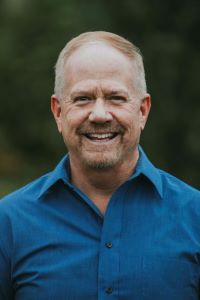The Place Where Nations Meet
By Steve Eng
All eight of my great-grandparents immigrated from Sweden to the U.S. Upper Midwest over a century ago, and I have always considered myself 100 percent American. But on my first trip to West Texas and the U.S./Mexico border, I was struck by how families in El Paso of Hispanic origin (who may look like foreigners to some) trace their roots to this part of the United States over 300 years earlier than my great-grandparents arrived in America.
My January trip to the U.S./Mexico border was guided by Sami DiPasquale and his team at Abara Borderland Connections, a faith-based nonprofit in El Paso that seeks to “inspire conversations across divides in a polarizing world.” “Abara” comes from the Hebrew and Arabic word for river-ford or river-crossing — a place along river borders where people and cultures from various nations meet.
Birthed out of a desire by many around the United States who wanted to learn more about the dynamics at the U.S. southern border, Abara was launched out of a church-based ministry, Ciudad Nueva, that had been loving migrant neighbors in tangible ways for years on the edge of downtown El Paso. Today, Abara supports border ministries both in Ciudad Juarez, Mexico, as well as in El Paso — a cross-border metropolis now numbering over 2.7 million people.
The Crossing
On the first day of our border encounter, Sami reminded us that biblically-rooted Christian living grows out of our relationship with God and extends to loving others — even those considered outsiders — in contrast to our human tendency to “circle the wagons” and close in upon ourselves.
We went through downtown El Paso to a place along the border wall/fence, where the fence, a canal, and a dike stood between us and the U.S./Mexico border in the middle of the Rio Grande River. We were right at an “abara” — a place where the Rio Grande is only a small stream, several feet wide and about a foot deep. And as we looked through the fence, we saw several migrants climbing the dike to present themselves to a U.S. border agent who’d been patrolling the dike in a white U.S. Customs and Border Patrol (CBP) SUV.
Migrants cross here regularly — a semi-legal first step to request asylum — although only 3 percent of those entering in the El Paso sector have their asylum claims processed. In most cases, U.S. CBP agents simply take them back to Mexico under “Title 42” Covid protocols and the “Remain in Mexico” policy, which requires that all migrants return to Mexico while awaiting a possible asylum hearing.
The Monuments
Then we walked over to two monuments just several yards away. The first monument commemorates the oldest known crossing along the Rio Grande River — an ancient indigenous pathway that Spaniard explorers first crossed in 1598. This became known as the “El Camino Real” connecting Mexico City to the interior of New Spain (in present day New Mexico and beyond).
And for 300 years following 1598, migrants continued to travel along this river crossing and wagon path between Mexico City and New Spain, bringing thousands of colonists, missionaries, displaced indigenous people, and supply caravans into the present-day U.S. and newly established Spanish towns dotting the Rio Grande.
The second monument marks the “El Paso del Norte” — the east-west route through the northernmost pass through the Rockies not snow-covered in winter. And with trains rumbling a couple hundred yards away, our guide Sami pointed that here Chinese migrants helped build the great Santa Fe rail line, traversing the American continent from the east all the way to the Pacific. And right at this historic junction, a hundred yards to the north of where we were standing, he pointed out the site of an early trading post in the 1600s, which became the historic La Hacienda Restaurant — a place where generations of people in El Paso have gathered for birthdays, wedding receptions, and other celebrations.
Several years ago this historic restaurant closed. But this past year, God opened doors for Abara Borderland Connections to purchase this building and several adjoining properties — $6 million of real estate they purchased for under $1 million.
To be known as Abara House, they plan to partner with other faith and civic organizations to host hundreds of individuals each year for border encounter experiences and related gatherings. Abara House will include sacred space and a guest house to help people connect, learn and engage stories on the margins, discern our role in society, and creatively respond to the complex issues facing the world’s borderlands today.
Discerning God’s Provision
This miraculous story of God’s provision — planting a Christ-centered immigration discovery center at the crossroads of some of the most significant and historic land routes on the North American continent — is just one of many amazing stories that God is authoring along the border.
When we allow God and the Scriptures to shape our perceptions of migration — both globally and along our southern border — we discover stories of pain and evil alongside stories of God’s provision, joy and the transforming love of Christ.
As in Jesus’ Parable of the Good Samaritan, where Jesus is clear that the hero is the “Good Outsider,” or the “Good Enemy,” we encounter migration stories where God continues to bring those from the outside into his fold.
Sami told several stories about Anunciation House, a Catholic shelter that has served 40-80 migrants at a time for the past 40 years. More broadly Catholic identity and mission in El Paso has engaged ministry with migrants for the past 400 centuries, while evangelicals in the El Paso area, he noted, were often dismissive of ministry with migrants: That’s something Catholics do, not us.
For years, many evangelicals and evangelical churches lived as if the border did not exist. Attend an evangelical worship service in El Paso or other regions along the border, and you could just as easily be in white suburban Minneapolis or Atlanta.
But in the El Paso area, God is doing something new.
“We Couldn’t Turn Away”
At first, some did not welcome this new movement of the Spirit. When one church allowed the U.S. Immigration and Customs Enforcement (ICE) office in El Paso to drop off migrants at their new migrant shelter, some became upset. Their congregation’s prayer team hesitated to pray for “those people.” Others protested the church welcoming “illegals” — even though they were arriving under a fully-sanctioned, legal program of the U.S. government. And some left the church.
Like many of us, they reacted emotionally to supercharged or controversial issues — rather than considering a more rational and Spirit-filled response.
Today, a new coalition of evangelical churches in the greater El Paso area is coming together to love their neighbors well. As one pastor said to a member of Abara’s staff, “We don’t agree with the politics of this, but when we looked in the face of asylum seekers, we couldn’t turn away. It’s what Jesus wants us to do.”
This article was originally published by the National Association of Evangelicals (NAE). You can find the original article here. The article is part 1 of the Stories from the Border series.
 Steven Eng, National Association of Evangelicals (NAE) advocacy director, works with NAE leaders, constituents and others to help advance the principles of the NAE document, “For the Health of the Nation,” as they use their God-given influence to bless our nation. Eng has served for three decades as an ordained evangelical pastor in the Evangelical Covenant Church. He received a degree in political science from St. Olaf College and a M.Div. degree from North Park Theological Seminary.
Steven Eng, National Association of Evangelicals (NAE) advocacy director, works with NAE leaders, constituents and others to help advance the principles of the NAE document, “For the Health of the Nation,” as they use their God-given influence to bless our nation. Eng has served for three decades as an ordained evangelical pastor in the Evangelical Covenant Church. He received a degree in political science from St. Olaf College and a M.Div. degree from North Park Theological Seminary.






